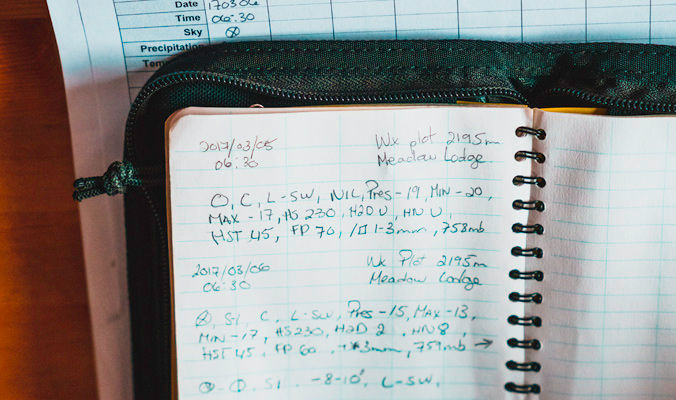There’s a difference between a vacation and a trip. Vacations are stress-free, feet-up affairs spent sipping cocktails in luxury’s lap. Trips are relaxing in a high-paced, flow-state way, filled with activity and energy, often leaving one begging for a vacation by the end. Resort skiers go on vacations to carve corduroy and eat filet; backcountry skiers go on trips to find adventure. And while the latter is easily more rewarding, earning those rewards takes proper planning and preparation. Here’s how to maximize a trip for all it’s worth.

Note to self: Make the most out of today. Meadow Lodge, Esplanade Range, B.C. [Photo] Louis Arevalo
Research, Research, Research
Discovery is a major draw of going somewhere new. But walking into a new setting unaware of what to expect is a recipe for misadventure. Start researching a destination early to build a mental picture of what to expect. The internet is the obvious jumping-off point for digging up the dirt on a location, but don’t rely solely on free online beta. The best information often lies in guidebooks—purchasing one is a worthwhile investment that’ll pay dividends upon arrival. Or plan to hire a guide, even just for a day, for on-the-ground expertise that no amount of research can match.
Plan, Then Overplan
Research alone doesn’t make for a successful trip. Develop plans A, B, C and D—brainstorm multiple objectives and understand how each plan might correlate to certain weather or snowpack dynamics. In the field, that will lead to efficiently adjusting goals based on what’s happening in the sky and snow. To enhance your mental picture of a location and various plans, create a custom Google map marked with trailheads, routes, objectives and even important in-town locations like restaurants, cafés, grocery stores and bars. And if you plan too many objectives and don’t hit several due to time constraints or conditions, isn’t that just reason to return?
Prepare for Efficiency
Efficiency comes in a few forms, mainly saving time, money and energy. Thorough research and planning will eliminate wasted time, but saving money and energy can be harder to achieve. Talk candidly with partners about costs beforehand and be sure everyone is on the same page about the trip’s level of austerity or swank. Use an app like Splitwise to keep track of and evenly divide expenses and then settle up afterward. Have a plan for food to keep shopping quick and meals simple. And consider booking things like a rental car and lodging even before flights, as those reservations are often free or less costly to modify or cancel. Save energy by packing less than you think you’ll need—bring gear that serves multiple purposes and stands up to days of use. Not only will that amount to lighter luggage, it’ll create less decision fatigue by serving up fewer choices.
Hit the Ground Running
Arrival time is go time, but set yourself up for a successful start. Compile plans, research, schedules, itineraries and important times into one easy-to-access location like a shared Google document. If possible, arrange travel to arrive a little earlier than necessary to build a buffer in case things go awry; should everything go smoothly, that time could become a bonus shakeout tour. Several weeks beforehand, start checking daily the weather and, if available, the avalanche forecast to develop a picture of the snowpack and how it’s trending so you’ll know what to look for and what to avoid upon arrival. Then, like David Bowie advises, “Take your protein pills and put your helmet on.”
Former Editor in Chief Tyler Cohen lived abroad over the last year in Oslo, Norway with his wife, Rachel, and the two spent their time either planning trips and communicating via Google docs or traveling to 14 countries on said trips.











Related posts:
The Friendly Frankenboot: With their new Hoji Pro Tour, Dynafit builds a more accommodating monster
Anna Soens reframes the conversation on athletic achievement in the mountains
Ace Kvale: An iconic photographer mentors a new generation
How a little solar gain on Mt. Baker, Wash. led to big consequences